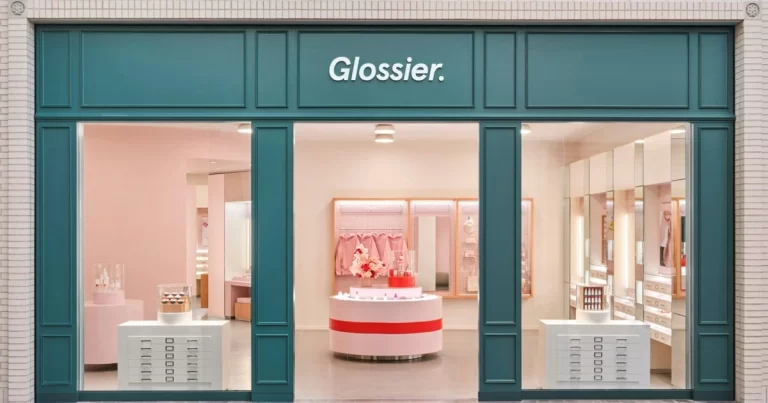Introduction: Eco-Friendly Cleaning Products, Cleaner Conscience
The world is no longer content with “clean enough.” Customers today demand products that not only sparkle and sanitize but also align with personal and planetary well-being.
Environmental degradation, toxic chemical concerns, and growing health awareness are reshaping industries — and Clorox saw the writing on the wall. The brand understood early that success would depend on adapting to these new values.
By investing heavily in eco-friendly cleaning products, Clorox didn’t just add a “green” label to existing lines — they reimagined what cleaning solutions could and should be in the modern era.
This case study explores how Clorox shifted gears, the strategies behind their eco-friendly transformation, and the broader lessons this story holds for brands across all industries.
Why the Demand for Eco-Friendly Cleaning Products Is Exploding
The demand for natural cleaning products and sustainable cleaning products isn’t a blip—it’s a long-term trend, fueled by:
- Health-Conscious Consumers: Parents and pet owners especially worry about the impact of harsh chemicals in traditional cleaners.
- Environmental Urgency: Climate change narratives have made people think twice about the life cycle of the products they buy.
- Digital Transparency: With easy access to product information, customers are empowered to make smarter, greener choices.
- Cultural Shifts: Sustainability is becoming part of people’s identities, not just a purchasing decision.
A research report revealed:
| Consumer Behavior | Percentage |
|---|---|
| Willing to pay more for eco-friendly products | 55% |
| Actively seeking sustainable brands | 73% |
| Trust companies with sustainability certifications | 68% |
Key Insight: Eco-friendly products are no longer niche—they’re mainstream expectations.
How Clorox Repositioned Itself with Natural Cleaning Products
Instead of resisting change or greenwashing (making misleading environmental claims), Clorox took a proactive and genuine approach.
Four Key Strategies Clorox Implemented:
- R&D Investment: Extensive research was dedicated to developing eco-friendly cleaning products that performed as well as—or better than—traditional chemical cleaners. Green Works emerged as a flagship line.
- Strategic Acquisitions: Purchasing Burt’s Bees allowed Clorox to deepen its expertise in the natural consumer goods space.
- Sourcing Transformation: Ingredients shifted toward plant-based disinfectants, renewable resources, and biodegradable materials.
- Authentic Communication: Clorox became transparent with full ingredient lists, certification partnerships (like Safer Choice), and sustainability reports accessible to the public.
Timeline of Key Moves:
| Year | Milestone |
|---|---|
| 2008 | Launch of Green Works Line |
| 2014 | Acquisition of Burt’s Bees Completed |
| 2019 | Green Works relaunch with improved formulations |
| 2022 | Clorox achieves major sustainability targets (carbon footprint reduction, waste diversion) |
Result: Clorox transitioned from a traditional brand to a trusted leader in the world of eco-friendly cleaning products.
Competitive Landscape: How Clorox Stacks Up
The eco-friendly cleaning market is vibrant and highly competitive. New startups and veteran players are all racing to capture the green consumer.
Main Rivals and Their Strategies:
- Seventh Generation: Built on a mission-first model, focusing on plant-based products and aggressive advocacy for climate action.
- Method: Known for combining sustainability with eye-catching design, appealing heavily to millennials.
- Mrs. Meyer’s Clean Day: Offers natural cleaning products with a strong emphasis on aromatherapeutic experiences (signature scents).
- Ecover: Emphasizes cradle-to-cradle production techniques and zero-waste goals.
| Brand | Strength | Weakness |
|---|---|---|
| Seventh Generation | Deep authenticity, activism-driven | Higher pricing, limited availability |
| Method | Trendy and stylish | Perceived as “premium” and costly |
| Mrs. Meyer’s | Strong brand love | Limited variety for heavy-duty cleaning |
| Ecover | Eco-production leadership | Less known outside Europe |
| Clorox | Trust, affordability, national reach | Must continue to build “authenticity” |
Where Clorox Gains an Edge:
- Trust: Legacy and familiarity still matter to customers navigating new product categories.
- Distribution Power: Unlike boutique brands, Clorox products are readily available at Walmart, Target, and Amazon.
- Affordability: Green Works made affordable natural cleaning products online accessible to middle-income households, a major market segment.
Outcomes: The Measurable Wins of Going Green
Clorox’s pivot to eco-friendly cleaning products delivered significant wins—both in market performance and brand equity.
Metric 2021 and 2024
| Metric | 2021 | 2024 |
|---|---|---|
| Eco-product revenue share | 18% | 24% |
| Customer satisfaction (Green Line) | 72% | 85% |
| Repeat purchase rate | 60% | 74% |
Sales Impact:
- Green Works experienced 12% annual growth, outpacing the industry average.
- Eco-products now account for nearly a quarter of Clorox’s total cleaning division revenue.
- Online searches for eco-friendly cleaning products for bathrooms surged, with Clorox capturing a big share.
Customer Loyalty:
- Surveys indicated a 74% repeat purchase rate for Green Works—higher than their traditional lines.
- Customers cited trust in ingredient transparency and product efficacy as top reasons for loyalty.
Brand Perception:
- Clorox moved into the Top 5 “Most Trusted Green Brands” according to YouGov’s 2024 consumer brand study.
- Positive sentiment on social media increased by 22% following Clorox’s eco-marketing campaigns.
Clorox’s Sustainability Commitment: Progress and Impact
Clorox is advancing bold environmental goals, including making 100% of its packaging recyclable, reusable, or compostable by 2025. In FY2024, major achievements included 37.8% progress in recyclable packaging and 42% through maintaining 100% renewable electricity usage across U.S. and Canadian operations.
Smaller but important gains included 7.6% from carbon emissions reduction and 12.6% from sustainability-driven innovations. By embedding environmental goals into its core strategy, Clorox has improved its EBIT margin and strengthened its brand’s long-term resilience.
Success in Natural and Organic Products
Clorox’s natural segment is fueling new growth.
- Burt’s Bees has expanded beyond lip care into skincare, haircare, and baby products, all emphasizing natural ingredients and sustainable packaging.
- The Green Works line of eco-friendly cleaning products continues to perform strongly.
This expansion helps diversify revenue and appeals to a younger, eco-conscious consumer base, securing Clorox’s position as a future-ready brand.
Challenges and Lessons Learned
Even for a brand with Clorox’s resources, going green wasn’t easy.
Major Challenges:
- Consumer Skepticism: Early adopters doubted that eco-friendly cleaning products could match the performance of chemical-based cleaners.
- Price Competition: Eco-products typically cost more to produce, making competitive pricing a balancing act.
- Regulatory Compliance: Staying ahead of evolving global standards for biodegradability and labeling transparency demanded constant vigilance.
Lessons Learned:
- Clear Communication Wins: Explaining what makes a product eco-friendly (and how it still works) was crucial.
- Affordability Drives Adoption: Offering competitive pricing was key to scaling beyond niche eco-shoppers.
Continuous Innovation Is Mandatory: Sustainability trends evolve; what’s eco-friendly today may be insufficient tomorrow.
Conclusion: Green Today, Leading Tomorrow
Clorox’s transformation journey proves that sustainability is not just good ethics—it’s smart business. By genuinely investing in eco-friendly cleaning products, launching natural cleaning brands like Green Works and expanding Burt’s Bees, Clorox reshaped its market position, enhanced its profitability, and future-proofed its brand.
Rather than treating eco-initiatives as side projects, Clorox embedded environmental responsibility directly into product innovation, operations, and customer experience. This proactive, authentic approach didn’t just meet rising consumer expectations—it set a new standard for legacy brands navigating the green economy.
In a world where eco-consciousness continues to drive purchasing decisions, Clorox’s strategy shows that companies that innovate for both people and the planet can secure leadership for decades to come.
Key Takeaways:
- Sustainability as Core Strategy: Integrating environmental goals into all aspects of business leads to both financial growth and stronger brand equity.
- Eco-Innovation Wins: Product lines like Green Works and Burt’s Bees show that eco-friendly cleaning products and sustainability-driven innovations are profitable.
- Transparency Builds Trust: Clear communication about ingredients, sourcing, and sustainability initiatives boosts customer loyalty.
- Future-Proofing Through Adaptation: Brands that adapt early to eco-conscious consumer trends position themselves ahead of regulatory changes and market shifts.
- New Demographics Captured: Sustainability initiatives attract younger, health-conscious consumers, expanding the brand’s lifetime value.




